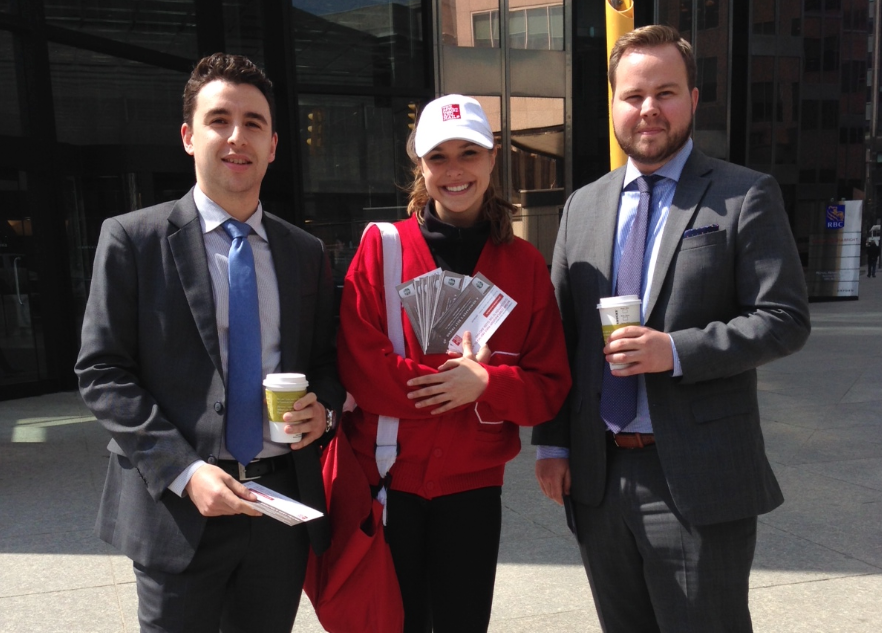Is There a Difference Between Live Marketing and Experiential Marketing?
In your quest to develop the best marketing campaign for your business, you will hear a number of ideas on what to do and how to do it. Don’t be surprised when you hear marketing experts mention terms like experiential marketing and live marketing. As you listen, it may seem almost as if those two terms are referring to the same approach. While there are a lot of similarities, the two strategies are not the same. Here is what you need to know about the differences between live marketing and experiential marketing, and how each one can help you build your brand.
A Question of Time
Time is one aspect that is a little different when it comes to comparing a live versus an experiential marketing approach. Essentially, live marketing is focused on holding an event that has a specific start and end time. In between, the things that happen are expected to produce immediate results. In short, you accomplish those goals at the actual event and there will not likely be much in the way of ongoing publicity and results.
As a representative from any live marketing agency in Toronto will tell you, a live marketing event must have set goals and a clear plan for achieving them. That’s because everything must be done within that allotted time frame. The impression you hope to make must be completed before those invited to the event leave.
One of the classic examples of live marketing is the taste test. You gather people together to announce the release of a new product like a soft drink. As part of the announcement, you invite everyone to try the product on the spot. In the best case scenario, those assembled will like the product and make a decision to place an order immediately.
An experiential marketing approach is designed to trigger additional results as time goes on. Sticking with the soft drink example, you would also supply free samples that people could take with them and share with their friends. Along with their positive impressions of the new product, they will function as ambassadors that spread the word to other consumers. In this sense, experiential marketing is building on the actual event and ensuring the momentum continues long after the live event has ended.
A Difference in Goals
What do you hope to accomplish as part of the campaign? In terms of defining specific and measurable goals, it will be easier to see if live marketing, experiential marketing, or a combination of the two will allow you to enjoy the results you seek.
While there may be some overlap, live marketing is usually geared toward making a press release, selling products on the spot, or getting additional publicity for the brand. Often, all three are part of the goals set for the event.
Experiential marketing may pave the way for selling products, but the primary goal is to generate additional brand awareness and promote a positive image for your company. This may mean offering some type of service related to your products over an extended period of time. A good example is a tire manufacturer who arranges for consumers to have their tires checked free of charge at one or two locations around town. If a consumer does need new tires, the brand can be purchased at a discount if they are bought at the same place where the test was conducted.
Whether the consumer buys the tires is secondary. What does matter is the positive impression the offer makes. Even if the consumer doesn’t need new tires now, remembering the brand and possibly buying those tires in the future is a definite possibility.
The Communication Mode
While there are exceptions, a representative from a live marketing agency will typically help the client set up an event where the communication is from an ambassador to the buying public. The activity is focused more on making an announcement and less on receiving feedback from those in attendance. The idea is to provide consumers with information that prompt them to buy something or at least plan to buy a product in the future.
With experiential marketing, the communication is more of a back and forth activity. Your ambassador poses questions or otherwise invites feedback from those who are present. Rating samples, playing games associated with the product, and providing impressions about the brand are all part of the process of building rapport and creating brand loyalty.
Varied Experience by the Attendees
What will attendees take away from your effort? Depending on the kind of impression you are seeking to cultivate, one marketing approach will be better than the other.
Perhaps your goal is to provide a shared experience that just about all the attendees perceive in the same way. Sponsoring a theatrical performance or a concert is a good example. Those in attendance occupy seats that are the same, watch the same performance, and leave as soon as the show is over. What they take away is a memory in exchange for the money paid to attend the event.
By contrast, experiential marketing often leads to more individualized experiences for attendees. Consider what this would mean if you arranged for the first 20 people to arrive at a spa to receive a massage. Each one received the massage in a private room. Some will find their backs feel more relaxed. Others notice that they seem less nervous or stressed after the massage. Some will enjoy the experience while others will be indifferent. In many cases, the experience will offer some immediate benefit and could lead them to purchase the massage oils your company produces at a later date.
Remember that using more than one marketing approach is often a good idea. An expert with a promotional agency in Montreal can help you determine what combination would help you move your business forward. Contact an agency today and begin building a campaign for the upcoming year. You’ll find that utilizing various marketing methods will increase brand awareness, build your reputation, and lead to greater sales volume.





